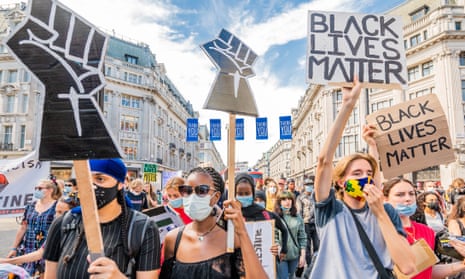“It’s a paralysing emotion… you can’t get anything done.” I’ve reflected on Toni Morrison’s take on anger a lot in recent weeks. There has been so much to be angry about: the brutal murder of George Floyd; the denials of a serious problem with the way the police treat black people here in the UK; the higher rates at which people of colour are dying of Covid-19. Like many others, I’ve keenly felt the exhaustion of having to explain why it’s upsetting to people who just don’t get it.
Righteous anger has its place - it can be cathartic and healing - but it’s not enough to change the world. There is nothing fair about this: it is a double injustice that it is not enough for those who experience racism to share their anger about it; we not only have to explain, but to persuade and cajole.
This feels like a dangerous moment for racial equality. Sure, there has been progress – there is no question that in terms of social attitudes, Britain is less overtly racist than it was 50 years ago. But there are rightwing campaigners deliberately trying to seed US-style culture wars, picking inflammatory fights to try to discredit anti-racist campaigns. Levels of race-based hate crime are rising. Not only is structural discrimination still rife, on some measures things have got worse: it is astounding that in the 20 years since the Macpherson inquiry, black people have gone from five times to nine times more likely to be stopped and searched than white people. It’s even more damning that this did not stop the Met commissioner, Cressida Dick, from casually asserting that her force no longer has a problem with institutional racism.
If anything, the term “institutional racism”, coined by the inquiry, has become more contested: even though it describes an evidenced phenomenon whereby people of colour are systemically subject to discriminatory treatment, Dick and others have argued that the term is “toxic”. Meanwhile, the energy of racial justice campaigners has been absorbed by fighting institutionally racist government policy such as Windrush rather than engaging in positive dialogue about what a racially just society might look like.
In this hostile context, it takes incredible effort to channel righteous anger into productive dialogue and recent weeks have instilled in me a renewed respect for those who have done so. I’ve written about the remarkable success of gay rights campaigners in the US in transforming attitudes towards equal marriage by articulating the argument not in terms of equal rights but by appealing to values that chime with social conservatives, such as love, commitment and family. I have a new appreciation for just how magnanimous you have to be to reframe arguments about your own discriminatory treatment to make them more appealing to people who are sceptical but can be convinced.
The most important conversation that those of us who care about racial justice can have right now is about what measures are needed to address structural racism and how to win public support for them. This is not easy. We all have a natural tendency to overemphasise the importance of individual behaviour and underemphasise the importance of societal power structures: it is a more intuitive way of understanding the world. The myth of meritocracy is a seductive one: it allows people with power to believe that they deserve it and those of us who aspire to it to believe it is attainable. Little wonder most people buy into it.
A world in which there has been glacial progress in addressing racial, gender and class structural discrimination requires US-style affirmative action policies, for example, quotas for university entry. But making the case for this to the majority who believe we inhabit a meritocracy is hard. There is emerging research on how to help people understand structural discrimination in relation to race and economic disadvantage but a lot more work on this is needed.
There is a dangerous trap here, though, which is at best a distraction and at worst entirely counterproductive, playing directly into the hands of the cultural warriors. It’s best summed up by the work of Robin DiAngelo, a white anti-racism campaigner, whose work on “white fragility” has propelled her to the fore of the US race debate. DiAngelo has made her name berating all white people for their complicity in racism; she says she finds white people even asking the question “what can I do?” about racism problematic. “Write down how you have managed to be a fully functioning adult in 2020 and not know what to do about racism!” she reprimands.
DiAngelo’s brand of white self-flagellation may be well meaning but it is damaging. It is the flipside of the person who claims that because they don’t see a person’s skin colour, they can’t be a racist: instead of seeing nothing through the prism of race, DiAngelo sees everything through race, simplifying the world into white supremacy and racial subjugation. Her worldview seeks to heap blame on individuals rather than understand that white people, too, are a product of society and structure.
Its simplicity may be alluring, but it is wrong and alienating to see all white people as potential Derek Chauvins, just as it is wrong and alienating in the context of #MeToo to see all men as potential Harvey Weinsteins. Blaming people may feel good but it won’t lead to structural change. There has to be a middle ground: of asking people to take responsibility and to step up as allies without alienating them by telling them how terrible they are first.
It’s not fair or just that those who face racism and other forms of structural discrimination have to put so much thought into how they make the case for eliminating it. But we do need to develop better and non-combative approaches to helping people understand the nature of racism and how it manifests itself in society today. DiAngelo’s approach simply risks entrenching structural discrimination further.

